Efficient Emergency Tree Services
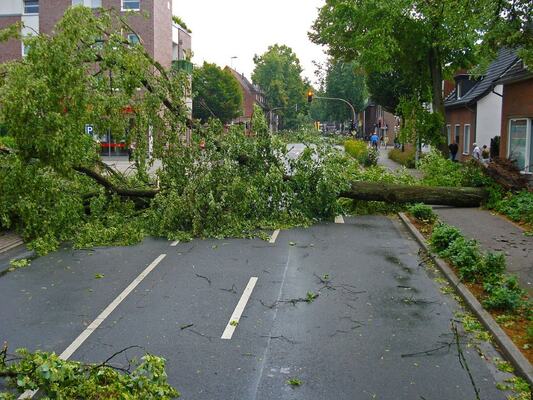
Image by Jan Mallander from Pixabay
Introduction
A single night of heavy wind or a summer squall can leave multiple trees damaged and fallen throughout a community.
Many homeowners may find themselves at their wit’s end trying to figure out how to deal with this delicate situation. Never underestimate the danger that fallen trees pose to your property or community! For emergency tree services in the San Francisco area, trust the experts at Arborist Now.
Trees can fall or become damaged for a whole host of reasons, from wind damage to blight to weakened root systems. Nobody wants a beloved tree on their property to fall, but if it does happen, Arborist Now offers the best emergency tree service and emergency tree removal in San Francisco.
Arborist Now’s skilled team responds to tree emergencies with expertise and prompt, reliable service. Storm damage? Fallen trees? Branch debris or insect infestations? Arborist Now will respond to your emergency with efficiency and service where safety always comes first.
Fallen Trees
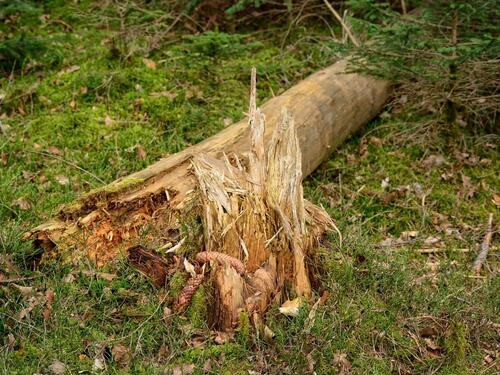
A Tree Trunk Snapped at the Base - Image by Manfred Antranias Zimmer from Pixabay
After severe storms, hundreds of trees can be uprooted, blown over, damaged, and otherwise scattered around a community. Sadly, fallen trees can be very common in certain conditions, so if you have trees on your property, it is wise to have a plan in place for what to do should the worst happen.
The most important element in these situations is a quick response. If parts of the tree have caused damage to your home or are blocking driveways or roadways, then the tree needs to be removed as soon as possible. This is where you should call a local tree service company that provides emergency tree services, such as Arborist Now.
The average cost of removing a 40-foot tree that is 36 inches around will run about $1,000. Actual costs will vary depending on the location of the tree or the branches, the tree’s condition, and whether you want the wood cut into usable firewood or hauled away. Contact Arborist Now to get an assessment and quote on your tree removal situation.
Tree removal contractors should carry property, casualty, and worker’s compensation insurance. Without worker’s compensation insurance, any tree removal worker injured on your property could sue you for the damages suffered in the line of work. Our tree removal professionals are fully insured and understand the seriousness of these jobs, so you can be sure that the trees will be dealt with carefully and promptly.
Fallen Branches
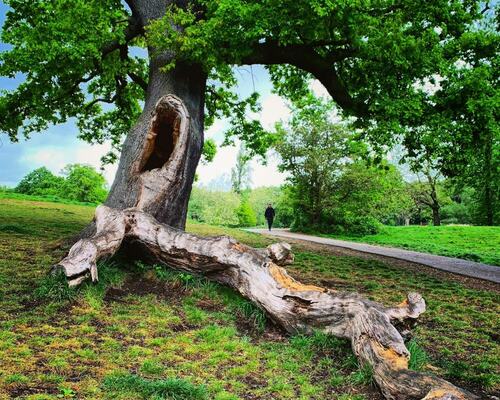
A Large Broken Branch Lies Next to a Tree - Photo by Crown on Unsplash
Heavy winds from storms, aging trees, or weakened wood make fallen branches an unfortunate fact of life for property owners with trees. But just because fallen branches may seem less intensive than an entire fallen tree, and therefore easier to remove yourself, do not get carried away. Disposing of tree debris and clearing fallen branches can be a time-consuming nuisance and can be dangerous in certain situations.
Removing large fallen branches by yourself can be very difficult, especially if you don’t have experience with tree removal. Using a chainsaw or other heavy machinery like a chipper-shredder without adequate knowledge of its operation is also extremely dangerous. Partially fallen trees are the most worrisome, as they are usually supported by a few branches under great tension and can resume falling at any time.
If the branches have fallen anywhere near power lines, professional emergency tree removal service is necessary to handle this potentially life-threatening situation. When in doubt, rely on Arborist Now for emergency tree removal and commercial tree removal in San Francisco.
Did you know that some of the tree debris from fallen branches could serve a purpose for your home? Certain sizes of tree limbs make ideal firewood. A good rule of thumb is to save every branch part that is 1½ inches in diameter for firewood and kindling. The rest can be disposed of. Some wood, such as cherry, walnut, or redwood, also has value as lumber for woodworking projects.
Diseased Trees
Just like humans, trees can suffer from a host of diseases and illnesses that can prove fatal to these magnificent organisms. Routine health inspections from trained arborists can help prevent disease, but in the event of an infected tree, a swift and accurate diagnosis is crucial to getting the tree healthy again. Moreover, certain diseases can be carried from tree to tree, so giving attention to a diseased tree can help ensure the rest of your trees do not follow suit.
As a local tree company with many years of industry experience, Arborist Now has the expertise to help you recognize signs of disease and infestation in your trees. With an on-site assessment, our certified arborists determine which branches and parts of the tree are diseased and if the situation is salvageable. If the tree is not too far gone, our experts are highly trained in removing diseased tree limbs and administering the correct treatments to bring it back to full health.
There are many different kinds of diseases that can affect your trees, including bacterial, fungal, and insect-borne illnesses. A common bacterial illness in the San Francisco area is fire blight, which causes trees to look like their branches have been burned and is caused by bacteria that thrive in warm, moist weather.
Fungal diseases you might come across include anthracnose, which causes defoliation, twig blight, and branch death; Dothistroma needle blight, which targets pine species and causes yellowing needles, defoliation, and stunting; and powdery mildew, which can affect many different tree species and causes white fungal spore growth and defoliation.
Diseases spread by insects are threats to your tree’s aesthetic beauty and health as well. For example, oak wilt is spread by infected beetles and causes rapidly wilting leaves, discoloration, defoliation, and eventual death in oak trees; thousand cankers disease is spread by walnut twig beetles and causes wilted, yellowed foliage.
Arborist Now has the training and knowledge to determine whether your tree might be harboring a disease, and if so, how to proceed with treatment. Keep in mind that if the tree is too sick to save, it should be removed by experts to prevent property damage or disease spread.
Insect Infestation in Trees

A Caterpillar Consumes a Leaf - Image by Ulleo on Pixabay
Trees are home to countless insects, many of which are harmless and coexist peacefully. However, certain species of insects are terribly invasive and can cause serious damage to and potential death of trees. Arborist Now experts can detect and treat trees with varying insect infestations. If the infestation is not too extensive, our professionals can propose a treatment plan to help rid the tree of the insects.
The three main types of insects that infest trees are the following:
Chewing Insects
Chewing insects feed on leaves or fruit and swiftly defoliate trees. Caterpillars and beetles make up the largest proportion of chewing insects. In general, trees can quickly recover from an attack by these defoliators, though repeat infestations can weaken a tree and eventually kill it by starving it of energy.
Common chewing insects include eastern tent caterpillars, which make their homes in popular ornamental trees such as cherry and apple, and Japanese beetles, which feed on foliage during the summer season and can defoliate a tree in three to four days.
Boring Insects
Boring or tunneling insects are often the most harmful to trees, and untreated boring infestations frequently result in tree death. These insects cause damage by boring into the trunk, roots, or branches of a tree. Some lay eggs that hatch and the larvae burrow even deeper into the wood, blocking off the water-conducting tissues of the tree. Signs of borer infestation include entry and exit holes in the bark, small mounds of sawdust at the base, and sections of the crown wilting and dying. Regular monitoring of a tree’s trunk for signs of boring insects enables early identification and quick treatment.
Boring insects include the maple twig borer, which causes premature yellowing and leaf drop in maples; the bronze birch borer, which will cause defoliation and loss of limbs in birch trees; and the emerald ash borer, which is particularly pernicious because symptoms usually do not arise in the tree until the infestation is too extensive.
Sucking Insects
These insects do their damage by sucking out the liquid from leaves and twigs. Many sucking insects are relatively motionless, living on the outside of a branch and forming a hard, protective outer coating while they feed on the plant juices. Signs of infestation include scaly formations on branches, dieback of leaves, and production of a sweet, sticky substance known as honeydew.
Common sucking insects include aphids, which feed on foliage and produce copious amounts of honeydew; adelgids, which feed on coniferous plants such as hemlock and firs; and leafhoppers, which can cause unsightly black marks on your trees’ leaves and can also spread serious diseases from tree to tree due to their flying capability.
Prevention is crucial to handling insect infestations. One of the best ways to protect your trees from insects is to keep them healthy, because insects are much less likely to target healthy trees and will instead set up shop in trees that are already wasting away or suffering from other internal issues.
A good mantra for tree owners on the lookout for insect infestation is to know your enemy. Different insects will target different kinds of trees. For example, owners of ornamental trees need to be particularly vigilant about boring insects, as borers tend to target woody ornamentals above other kinds of trees. Research the types of insects that you should be on the lookout for and the early symptoms of their presence, and, in case of infestation, be prepared with the proper tools and sprays to nip them in the bud before it’s too late.
Arborist Now can also provide routine tree inspections to ensure that they are in healthy condition.
Damaged Trees
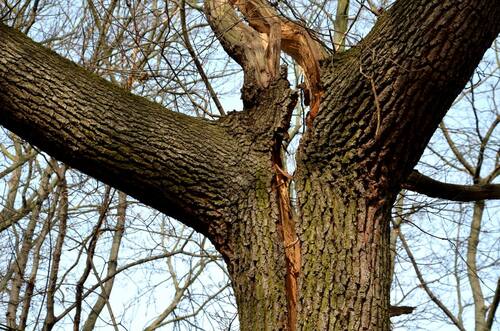
A Tree with a Cracked Trunk
If trees have sustained damage on your property, you can do a few things to properly assess the damage and determine which trees should be removed and which can potentially be salvaged by an expert tree service. Always keep in mind that extreme caution should be used, especially if trees are partially fallen or hanging suspended from different structures.
Small broken branches can be removed from the rest of the tree. This will help prevent the spread of disease or decay by agents entering the dying branch and having easy access to the rest of the tree. But resist the urge to overprune branches that are not too damaged, because the tree needs the energy they provide to recover!
Sometimes, trees can sustain damage to their bark. If the wound is deep enough to penetrate the trunk bark, the tree could be in danger of fungus entering and causing decay. If the tree’s cambium layer—a thin layer of vascular tissue between the inner bark and the wood of the tree—is damaged, it can impact the tree’s ability maintain its trunk and root strength. A skilled arborist can determine the depth of the tree wound and how to dress and it and encourage healing.
The roots of a tree can tell a lot about its overall health. The large roots that sprout from the trunk can be checked in the months after damage was sustained. Healthy roots are brown or gray and have hard centers. Dying roots are soft and malleable.
Signs of damage in trees to the point of hazardous conditions include decayed wood, cavities, mushroom growth at the tree’s base, carpenter ants, and cracks in the trunk where branches are connected. Ask a professional at Arborist Now to observe these symptoms and determine whether the tree should be removed.
Dead Trees
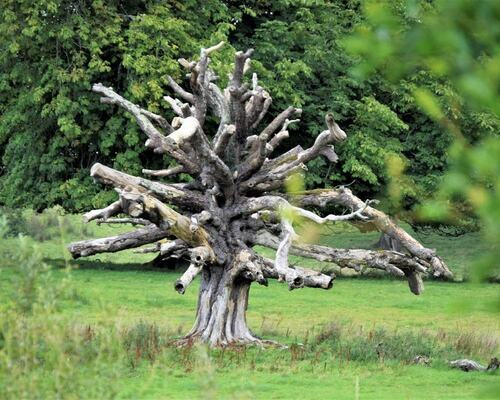
A Dead Tree Stands in a Field - Image by Anna & Piotr Pieszak from Pixabay
In some situations, even the most attentive care cannot stop a tree from dying due to a host of difficult environmental reasons. Dead trees pose many hazards and complications to your property, which is why they are best dealt with swiftly by skilled arborists. Employing a professional tree service with technical know-how like Arborist Now is the safest and most efficient way to ensure dead trees are properly removed.
Arborist Now provides commercial tree removal and emergency tree removal in San Francisco. Our tree experts have the knowledge and equipment to properly dispose of dead trees while minimizing the risk of injury or property damage.
Complications of a dead tree on your property can include:
- Property Damage: Branches can fall from dead trees without warning, causing serious damage to your home and/or areas of your property.
- Personal Injury: Any person who wanders near or under the dead tree can be subject to serious injury from falling branches and weakened wood.
- Utility Line Damage: If the tree is near utility lines, it is even more essential to have it professionally removed before it causes damage to the lines by dropping branches.
- Pest Infestation: Dead trees can become a gathering place and breeding ground for various insects, pests, and critters that can migrate to your home easily.
- Disease Outbreak: If the tree died from a disease, other trees and plants nearby can contract the illness, jeopardizing the health of your entire property.
Conclusion
Our experts have spent years working with homeowners to beautify and protect their trees and surrounding property! We offer superior dead tree removal service because we understand how important these jobs are to preserve the natural beauty of the land and protect your home. Contact us today to cover every aspect of caring for your trees!
Originally published on December 18, 2017.





